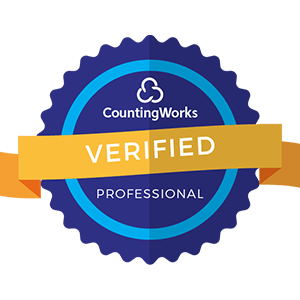
In today's rapidly evolving business landscape, one of the biggest disruptors is the rise of automation. As artificial intelligence, robotics, and other advanced technologies become more sophisticated and ubiquitous, they transform the nature of work. Many tasks humans once performed are now automated, from manufacturing and data entry to customer service and even high-level analytical roles.
This seismic shift is changing not only the skills required for many jobs but also the very essence of what it means to be an effective leader. In an age where machines can handle an ever-greater share of work, the most vital leadership qualities are becoming distinctly human ones—things like emotional intelligence, creative thinking, and the ability to inspire and engage others.
Organizations need to rethink how they identify, develop, and support leaders to thrive in this new paradigm. The playbooks and best practices that served industrial-age companies for decades are quickly becoming outdated. Instead, we need a fresh approach to leadership development that reflects the realities and harnesses the opportunities of the automation age. Here are some key strategies and principles to focus on.
In a business environment of constant disruption and reinvention, adaptability is one of the most essential leadership traits. Leaders must rapidly learn new skills, technologies, and working methods as conditions change. They can no longer rely on a fixed base of knowledge acquired early in their careers. Instead, they need to be continuous, agile learners, able to absorb and apply new information quickly.
Leadership development programs should emphasize experiential learning rather than classroom-style information transfer to cultivate this capability. To this end, rising leaders should be given "stretch" assignments and rotations that push them outside their comfort zones. They should also be immersed in different functions, markets, and geographies. Finally, they should be simulated through real-world business challenges through interactive case studies and scenario planning exercises. The goal is to build mental flexibility and get leaders comfortable with navigating ambiguity and complexity.
This adaptability also extends to an organization's leadership development approach itself. Avoid locking into rigid, one-size-fits-all programs that could quickly become irrelevant. Instead, create modular offerings that can be mixed, customized, and updated as needs evolve. Leverage new learning technologies like mobile micro-lessons, AI-powered adaptive learning platforms, and virtual/augmented reality to make leadership training as engaging and personalized as possible.

With intelligent machines increasingly able to automate cognitive work, the skills that will most differentiate human workers are things that robots can't easily replicate: creativity, empathy, persuasion, and complex problem-solving. For leaders, honing these capabilities is crucial to transforming their organizations.
Take creativity as an example. Machines may generate valuable insights from data, but it still takes imaginative leadership to find innovative solutions to emerging challenges. Leaders need to be able to connect disparate ideas, envision radically different futures, and see opportunity in disruption.
Similarly, while AI may be able to detect human emotions, it can't relate to people with genuine compassion and sensitivity. As workplaces become more automated and less personal, employees will increasingly look to leaders to meet their core human needs—for belonging, appreciation, and personal growth. Building emotional intelligence and practicing an empathetic, coaching-oriented leadership style will be vital.
Human skills like storytelling, influencing, and holistic systems thinking will also increase in importance. Leadership development initiatives should zero in on cultivating these capabilities through coaching, 360-degree assessments, and guided self-reflection. The most impactful programs will be highly experiential and interpersonal, with extensive opportunities for peer feedback and practicing skills through role playing and simulations.

While developing vital human leadership skills, organizations must also help leaders get comfortable integrating AI and automation into their teams and workflows. The most successful companies will be those that can combine unique human capabilities with intelligent technologies in seamless collaboration. Leaders play a crucial role in envisioning how to optimize this human-machine symbiosis and bring it to life.
To build this "augmentation" mindset, give leaders hands-on experience with AI tools tailored to their function, whether an HR chatbot for personnel management, a sales forecasting engine for planning, or an automated risk detection system for compliance. Have them experiment with human-machine task allocations and capture lessons learned.
Leaders must also develop a working knowledge of data science and AI so they can ask the right questions, sense-check algorithmic outputs, and make ethical decisions about where and how to deploy automation. While technical experts can advise on the details, leaders must be AI-savvy enough to provide sound strategic guidance. Building this baseline fluency should be a critical priority for leadership development.
Additionally, it helps leaders get better at managing hybrid human-machine teams. This includes learning how to onboard and "train" AI agents, establish the right level of human oversight, and facilitate smooth collaboration between human and robotic workers. It also means being sensitive to the human impacts of automation—communicating changes, ensuring fair and transparent outcomes, and helping displaced workers reskill and transition to new roles.
As the role of leaders evolves, organizations also need to rethink the pathways and criteria for people to reach leadership positions in the first place. Many traditional "stepping stone" jobs that groom future leaders—like junior analyst, project manager, or function-specific director roles—are prime targets for automation in many industries. If we rely on yesterday's career ladders, we may not give tomorrow's leaders the right skills and experiences to succeed.
Instead, focus leadership pipelines on roles likely to grow in demand and importance as the workplace evolves. These may be jobs that involve complex problem-solving, cross-functional orchestration, and working closely at the human-machine frontier. Think "automation ethicist," "AI trainer," or "agile portfolio manager."
Also, consider prioritizing leadership candidates with backgrounds in multiple disciplines since the work of leaders is becoming more boundaryless and multifaceted. Look for people who can deftly combine business savvy with fluency in data, behavioral science, and design thinking. Actively recruit candidates with unconventional backgrounds and create "short-cut" leadership opportunities for specialists to gain business experience through rotational programs and experiential learning.
Another fundamental shift is to make leadership development more ongoing and dynamic than a linear path based mainly on tenure or hitting specific milestones. As skill needs change more rapidly, the highest-potential leaders may demonstrate agility, self-directed learning, and comfort with reinvention—even if they don't fit the typical "high performer" mold. Create ways to frequently reassess employees' capabilities and spot hidden leadership potential through project-based stretch assignments, skill-based mentoring programs, and talent marketplaces. The goal is to make leadership more of an "opt-in" path open to more people at more stages of their careers as they develop critical skills.
As the velocity of change accelerates and the complexity of business challenges grows, it's becoming harder for any single leader, no matter how heroic, to lead their organization alone. Instead, leadership in the automation age will increasingly be a team sport—less about command-and-control decision-making by individuals and more about cultivating "collective leadership capacity" and empowering networks of teams.
To make this shift, start by reframing leadership development to focus more on building connections and collaboration skills. Instead of just training individual leaders, bring together "leadership circles" of people from different levels and functions to work on real organizational challenges as a team. Have them learn and apply techniques like systems thinking, polarity management, and generative dialogue to tackle problems more creatively.
Change the metrics and incentives used to guide leadership behavior as well. Instead of just focusing on narrow efficiency measures or short-term financial targets, add goals around things like breaking down silos, fostering psychological safety in teams, and improving employee engagement and wellbeing. Fundamentally, the automation age calls for a more empowering, trust-based, and ecosystem-minded approach to leadership. Cultivating those mindsets should be core to any development strategy.
It's also important to distribute leadership development more broadly across the organization. With growing skill gaps and more millennials and Gen Z in the workforce hungry for growth, we need to scale up access to leadership training and make it available to far more than just the top few percent. Harness tools like mobile leadership courseware, AI-based virtual coaches, and online talent communities to personalize and democratize leadership development. The most forward-looking companies will invest in nurturing collective leadership capacity at all levels as an organizational core competence.

As the automation age unfolds, leaders' roles will expand and evolve. Leaders must become more adaptive, emotionally intelligent, and techno-savvy to guide their organizations through disruptive change. They'll need to improve at empowering people, collaborating with machines, and sharing leadership dynamically. And they'll need to do all this while responding to rising demands for sustainable performance, social impact, and ethical decision-making in an increasingly transparent world.
To meet this tall order, organizations must fundamentally reinvent their leadership development strategies. The core principles of leadership endure, but the methods must change. The most successful companies will let go of outdated leadership paradigms and commit to new ways of identifying, empowering, and enabling leaders suited to today's challenges.
This means:
By implementing these strategies, companies can build a deep bench of future-ready leaders able to harness the power of automation while keeping their organizations centered on human needs and potential. Now more than ever, as the fabric of work changes around us, investing in the right capabilities and mindsets will be the key to sustained success. Organizations that embrace this leadership imperative will survive and thrive in an age of automation.


